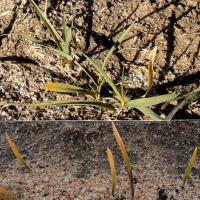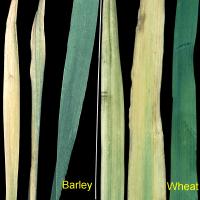Primary salinity
- These are heavy textured, highly alkaline and usually well-drained soils with high levels of salt in the subsoil.
- Most common are morrell-blackbutt loams on the edge of major valleys or greenstone soil and Dowak clay in the Esperance mallee.
- These soils yield well in wet seasons and the worst yielding soils in dry seasons.
Secondary salinity
- Salinity has been caused by salt accumulation from saline watertables or seepages that have increased after land clearing.
- Soils vary but are frequently duplex or heavy textured.
- Salinity is frequently accompanied by waterlogging in autumn and winter, which greatly increased plant damage.
Contributing factors
- In secondary salinity situations, waterlogging greatly increases the toxic effect from high salt content but yields are likely to be less affected if there is sufficient rainfall to leach salts away from plant roots.
- Naturally saline morrel loam soils are well drained and produce excellent yields during wetter seasons but yield very poorly during dry seasons due to accumulated salt in the subsoil.






